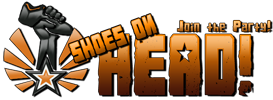Quando leggo The New Yorker, di solito, ciò che mi diverte di più sono una gemma di S.J. Perelman, i fumetti, o qualcosa nel The Talk Of The Town. Nel numero del 17 Maggio 1958, fu tuttavia la rubrica di jazz che mi fece scoppiare dal ridere, quando Whitney Balliett in una recensione su un album di Miles Davis scrisse, "Coltrane, un allievo di Sonny Rollins...". Naturalmente sappiamo che non intendeva che Coltrane si recava da Rollins con un libro di Klose per lezioni settimanali, ma l’implicazione, in questa superficiale critica, era chiara e cioè che Coltrane dovesse qualche cosa a Rollins per lo stile acquisito.
É vero che quando nel tardo 1955 Coltrane si unì al quintetto di Miles Davis, Sonny (il Rollins di allora e di qualche tempo prima) esercitava una leggera influenza su di lui. Ma anche ciò si dimostrò essere un fatto temporaneo. Le influenze che invece ebbero Dexter Gordon (la produzione del 1946), Sonny Sitt, Stan Getz (certi aspetti delle sonorità) e tutto il tratto di Charlie Parker, erano molto più evidenti, anche allora. Da quel momento, Coltrane si sviluppò piuttosto lungo una linea personale, per diventare lui un punto di riferimento che potesse influenzare altri musicisti. Ora, lui e Sonny, sono due linee parallele, ognuna delle quali contribuisce alla crescita del jazz con nuove idee, seguendo un proprio percorso.
Soultrane è una ballata scritta da Tadd Dameron che si esibisce in Mating Call (Prestige 7070 - un album in cui spiccano in modo particolare Coltrane e Dameron). Quest’album, dal titolo Soultrane, non include quel brano, ma la Prestige pensò ad un nome appropriato per un’intera serie di pezzi di Coltrane, che giocasse sul suo nome e che la descrivesse in modo fedele.
Coltrane si pone di fronte alla musica che suona, seriamente; fare jazz è ciò che gli interessa. In lui c’è un impegno costante per cercare di migliorare. É autocritico e disposto a fare il possibile, perché l’animo è sereno, ed è una persona che si analizza. Consuetudini, tutte queste, che non sono certo sconosciute a lui.
Come nel penultimo album, Coltrane gode del supporto di Red Garland, di Paul Chambers e di Arthur Taylor. Queste quattro persone hanno fatto molte cose suonando assieme. In questo caso la familiarità ha giovato al rapporto.
C’è un altro straordinario aspetto che viene ripreso dall’ultimo album, e cioè l’esecuzione di brani che raramente sono stati registrati. In John Coltrane With The Red Garland Trio ciò è stato fatto. Soft Lights And Sweet Music, You Leave Me Breathless e la Slow Dance di Alonzo Levister. In Soultrane nessuno dei pezzi è stato riproposto in modo eccessivo, e tre di loro sono interpretazioni del tutto nuove.
La prima, quella che apre, è un’indagine esauriente di Good Bait, un brano nato dalla collaborazione tra Tadd Dameron e Count Basie, registrata per la prima volta da Dizzy Gillespie negli anni Quaranta. Il modo in cui Coltrane suona i motivetti della melodia, le dà quasi un sapore di minuetto. L’allegria che riesce a generare in questi accordi sale per gradi. Gli assoli di Garland e Chambers (pizzicato) sono della stessa fattura, robusti incastri che la sezione ritmica marca per tutto il tempo dell’esecuzione. Prima che la melodia riparta nuovamente, Coltrane e Arthur Taylor intrattengono un dialogo estremamente ingegnoso, paragonabile ad una "discussione da bar".
I Want To Talk About You è una ballata, scritta e originariamente registrata da Billy Eckstine, quando verso la metà degli anni Quaranta, era il leader della sua band. Per quanto io ne sappia, questa deliziosissima canzone, fino ad oggi non è mai stata più registrata da nessuno. In questo pezzo si può vedere come una ballata possa essere suonata con il sentimentalismo tipico del jazz. Coltrane è emotivo, ma mai esageratamente fiorito. Il languido e triste piano di Garland, gli assoli puliti di Chamber, ne fanno risaltare il romanticismo.
Il secondo lato del disco si apre con un brano di Joe Stein e Leo Robin, You Say You Care, brano che non avevo mai sentito prima d’ora in versione jazz. Coltrane qui sviluppa delle variazioni di accordi, sicuramente tra le più interessanti, collocandole in un arrangiamento musicale veloce, che tende ad aumentare. La semplice linea fluida del piano di Garland e le dita di Chambers che volano sulla tastiera del basso sono altri tratti distintivi che caratterizzano questo pezzo.
Theme For Ernie è un brano che Freddie Lacey, musicista di Philadelphia, ha dedicato a Ernie Henry l’ex sassofonista contralto di Gillespie che morì improvvisamente nel Dicembre del 1957 all’età di trentun’anni. Coltrane ne suona il lamento senza discostarsi troppo dalla melodia originale, ma permeandola di ricordo e tristezza. Red e Coltrane si dividono l’ultimo ritornello.
Red apre Russian Lullaby con un’introduzione fuori tempo prima che Coltrane inizi a suonare. Ponendo l’attenzione su questo brano e su Soft Lights And Sweet Music, sembrerebbe che a questi musicisti piaccia suonare Irving Berlin a ritmi sostenuti. Sono certo che questa versione di Russian Lullaby terrebbe Nikita sveglia e con la voglia di muoversi per tutta una notte. Le "distese del suono" di Coltrane, di cui da allora ne fece ampio uso, sono evidenti all’inizio del ritornello.




 ).Io lo trovai almeno 7-8 anni fa spulciando tra le cartelle di un utente di Dc++
).Io lo trovai almeno 7-8 anni fa spulciando tra le cartelle di un utente di Dc++






 )
)
